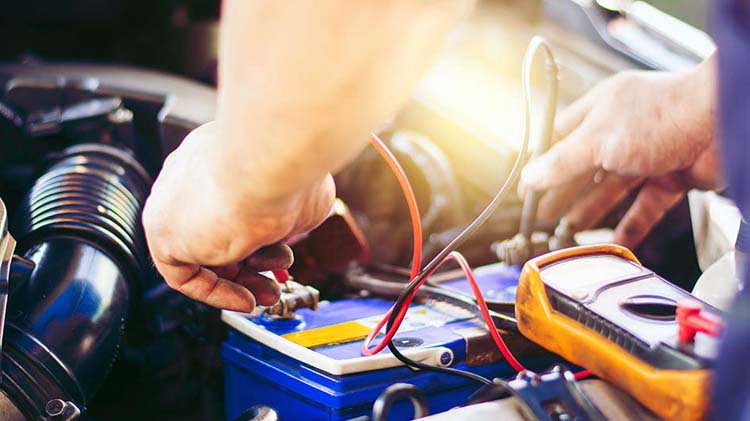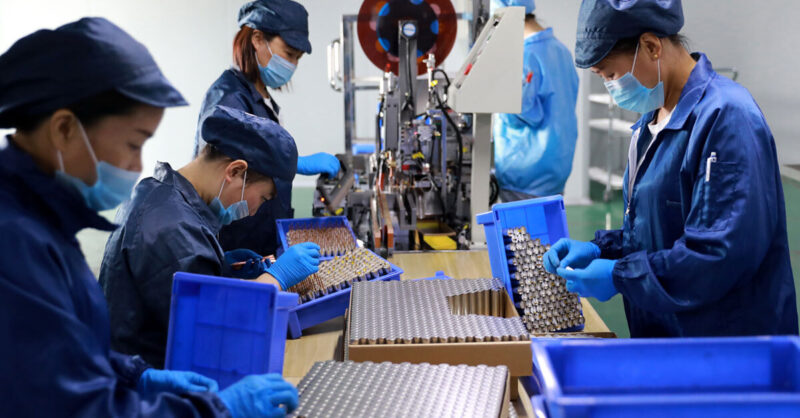Deep Cycle vs Starting Battery: What’s the Difference?
Batteries are an essential component of many devices and systems we rely on every day. From powering our vehicles to providing backup energy for our homes, batteries play a crucial role in our lives. When it comes to batteries, two common types that often get confused are deep cycle batteries and starting batteries. While both serve different purposes, understanding the difference between the two can help you choose the right battery for your specific needs.
Starting batteries, also known as cranking batteries, are primarily designed to provide a burst of power to start an engine. They are commonly used in vehicles like cars, motorcycles, and boats. Starting batteries deliver a large amount of current for a short period, typically a few seconds, to engage the starter motor and turn the engine over. Once the engine is running, the alternator takes over and recharges the battery.
Deep cycle batteries, on the other hand, are designed to provide a steady and continuous flow of power over an extended period. They are commonly used in applications that require constant power, such as golf carts, electric scooters, marine trolling motors, and RVs. Deep cycle batteries are built with thicker plates and are designed to withstand multiple discharge and recharge cycles. Unlike starting batteries, deep cycle batteries can be discharged up to 80% without causing significant damage to their lifespan.
The main difference between deep cycle and starting batteries lies in their construction and the way they deliver power. Starting batteries have thinner lead plates, which allow for a higher surface area and lower internal resistance. This design enables the battery to deliver a high current for a short period, making it ideal for starting engines. Deep cycle batteries, on the other hand, have thicker lead plates with a higher density of active material, enabling them to provide a steady current over a longer period.
Another important factor to consider is the battery’s capacity. Starting batteries are designed to deliver a high burst of power but have a lower overall capacity compared to deep cycle batteries. Deep cycle batteries, on the other hand, have a larger capacity and can consistently deliver power for a more extended period.

It is crucial to choose the right type of battery for your specific application. Using a starting battery in a deep cycle application can result in reduced battery life and poor performance. Deep cycle batteries, on the other hand, may not provide enough power to start an engine quickly. Understanding the requirements of your device or system is essential to ensure you select the appropriate battery type.
In conclusion, deep cycle batteries and starting batteries serve different purposes and have distinct characteristics. Starting batteries are designed to provide a high burst of power for starting engines, while deep cycle batteries are built to deliver a steady flow of power over a more extended period. Understanding the differences between the two will help you make an informed decision when choosing the right battery for your specific needs. So, whether you need to start an engine or power a system consistently, selecting the appropriate battery type is crucial for optimal performance and longevity.
-
 In recent years, there has been a significant surge in the development and usage of portable electronic devices. These devices have become an integral part of our daily lives, allowing us to stay connected, entertained, and productive on the go. One of the key factors that have contributed to the success of these devices is the advancement in lithium battery...Læs mere
In recent years, there has been a significant surge in the development and usage of portable electronic devices. These devices have become an integral part of our daily lives, allowing us to stay connected, entertained, and productive on the go. One of the key factors that have contributed to the success of these devices is the advancement in lithium battery...Læs mere -
 Lead-acid batteries are popular because of their low production costs and excellent performance. As one of the earliest rechargeable batteries, it remains a strong and popular energy choice today, with a global market value of nearly $40 billion. Next, we will take a deep dive into the reasons to choose lead-acid batteries for power. What are lead acid batteries? As...Læs mere
Lead-acid batteries are popular because of their low production costs and excellent performance. As one of the earliest rechargeable batteries, it remains a strong and popular energy choice today, with a global market value of nearly $40 billion. Next, we will take a deep dive into the reasons to choose lead-acid batteries for power. What are lead acid batteries? As...Læs mere -
 The demand for renewable energy sources has increased significantly in recent years, and it has led to an increase in the production of lithium-ion batteries. Among these batteries, the LiFePO4 battery is gaining popularity due to its long cycle life, high safety, and environmental friendliness. In this article, we will discuss the price of a 100Ah LiFePO4 battery. The...Læs mere
The demand for renewable energy sources has increased significantly in recent years, and it has led to an increase in the production of lithium-ion batteries. Among these batteries, the LiFePO4 battery is gaining popularity due to its long cycle life, high safety, and environmental friendliness. In this article, we will discuss the price of a 100Ah LiFePO4 battery. The...Læs mere -
 When it comes to boating, having a reliable and efficient battery is crucial. Whether you are planning a relaxing day on the water or embarking on an adventurous fishing trip, a marine starting battery can ensure that your watercraft is ready to go when you need it most. In this article, we will explore the benefits of using a marine...Læs mere
When it comes to boating, having a reliable and efficient battery is crucial. Whether you are planning a relaxing day on the water or embarking on an adventurous fishing trip, a marine starting battery can ensure that your watercraft is ready to go when you need it most. In this article, we will explore the benefits of using a marine...Læs mere -
 When it comes to marine vessels, having a reliable starting battery is essential for smooth operations. Whether you have a small boat or a large yacht, investing in a high-quality marine starting battery can make all the difference in ensuring a seamless and enjoyable experience on the water. A marine starting battery is specifically designed to provide a burst...Læs mere
When it comes to marine vessels, having a reliable starting battery is essential for smooth operations. Whether you have a small boat or a large yacht, investing in a high-quality marine starting battery can make all the difference in ensuring a seamless and enjoyable experience on the water. A marine starting battery is specifically designed to provide a burst...Læs mere -
 Introduction In today's fast-paced world, where technology plays a vital role in our daily lives, the demand for efficient and reliable power solutions is increasing. One such solution that has gained significant popularity is the High-Efficiency 48V LiFePO4 Battery Charger. This innovative charger offers an optimal power solution for a wide range of energy needs. In this article, we...Læs mere
Introduction In today's fast-paced world, where technology plays a vital role in our daily lives, the demand for efficient and reliable power solutions is increasing. One such solution that has gained significant popularity is the High-Efficiency 48V LiFePO4 Battery Charger. This innovative charger offers an optimal power solution for a wide range of energy needs. In this article, we...Læs mere -
 Introduction: The battery industry has experienced significant advancements in technology and sustainability in recent years. These breakthroughs have revolutionized various sectors, including consumer electronics, electric vehicles, and renewable energy. This article will explore the latest developments in battery technology and the efforts towards creating more sustainable and eco-friendly batteries. 1. Lithium-ion Batteries: Lithium-ion batteries have become the dominant technology...Læs mere
Introduction: The battery industry has experienced significant advancements in technology and sustainability in recent years. These breakthroughs have revolutionized various sectors, including consumer electronics, electric vehicles, and renewable energy. This article will explore the latest developments in battery technology and the efforts towards creating more sustainable and eco-friendly batteries. 1. Lithium-ion Batteries: Lithium-ion batteries have become the dominant technology...Læs mere

